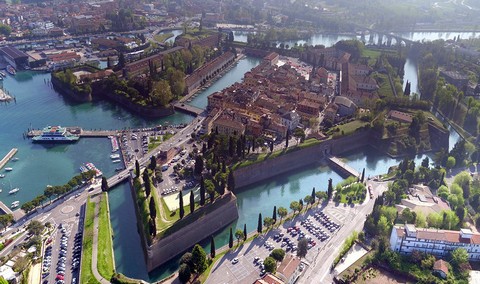
In 2017, UNESCO officially gave this set of assets World Heritage status; the Venetian defences cross several countries between Italy, Croatia and Montenegro, and, in the Veneto region, they included the town of Peschiera del Garda, which acted as a pentagon-shaped fortress.
The Venetian Republic took control of this town in 1440 and immediately recognised its strategic importance from both a military and commercial point of view. During the sixteenth century, armies of engineers and architects therefore worked to consolidate its defence system. The walls, which are still splendidly preserved to this day, were equipped with ramparts and bastions, designed by Guidobaldo della Rovere and built by Michele Sanmicheli.
UNESCO’s recognition confirms the exceptional value of the modern military culture (rampart system) that was developed by the Republic of Venice between the 16th and 17th centuries. The land-based fortifications protected the Serenissima from attacks by other European powers arriving from the north-west, while the defences of the Stato da Mar protected the sea routes and ports of the Adriatic Sea all the way to the Levante. This transnational defence system stretched for more than 1,000 km, between Lombardy and the eastern Adriatic coast.
Link